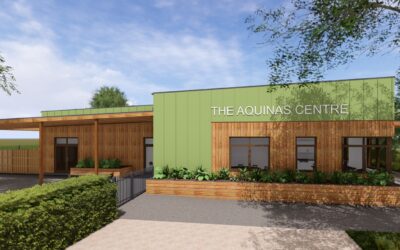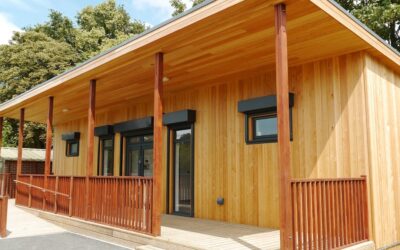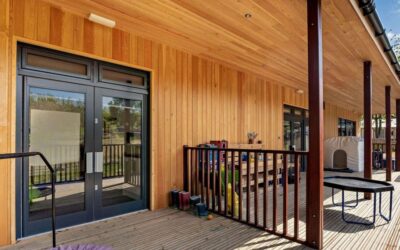TG Escapes Blog
Eight Reasons To Take Learning Outside
As children increasingly spend their free time inside indulging in ever more screen-based, sedentary pastimes, their physical and mental well-being has fallen into decline.
Fitness levels are falling, obesity is on the rise and mental health is suffering, to name just a few of the detrimental effects of the lifestyle of the average modern child. Meanwhile, their parents are finding themselves working ever harder and longer, leaning heavily on child minding gadgets to keep their kids occupied. Never has it been more important for educators to take learning outside of the classroom, in order to inject a much-needed boost to their pupils’ health and ability to learn.
Boost Physical Health
Aside from the obvious boost to physical fitness arising from moving around in a large outside space, exposure to sunlight confers a rich array of natural health benefits which will enhance a child’s ability to learn. It tops up vitamin D levels (essential for healthy bones, circulation and nervous system) and boosts melatonin production. In turn, this will regulate circadian rhythms and metabolism which aids weight management and sleep patterns.
Enhance Mental Well-Being
Exposure to natural light and physical exercise also stimulates serotonin production which not only acts as a powerful anti-depressant but also serves to inhibit the urge to overeat and promote a good night’s sleep. A well-rested, happy child will be much more able to engage with the learning process.
Improve Cognitive Function
Time spent outdoors and exposed to nature has been shown by several academic studies to enhance concentration and self-discipline, whilst also improving awareness, reasoning and observational skills. Similarly, it has been found to have a positive impact upon academic achievement in the core curricular subjects of reading, writing, maths and science,
Ignite Imaginations and Inspire Creativity
Being out in nature is increasingly believed to alter the dominance of different parts of our brain, allowing us to think in different ways. The prefrontal cortex, responsible for conceptual thought and sustained attention, is given a break when we venture outside, allowing other parts of the brain to flex their muscles and unleash creative ideas and problem-solving insights.
Encourage Risk Taking
Allowing children to try new things outside enhances their awareness of their physical ability and their capacity to assess and manage risk. This in turn bolsters their self-confidence and self-reliance when confronted with change and challenging situations as they move through childhood into adult life.
Develop Social Skills and Inter-Personal Relationships
Taking a class of children outside offers them a myriad of new situations in which to reassess their self-perception and their interaction with their peers. It leads to an improvement in communication and teamworking skills and generally tends to foster positive relationships. Conversely, there tends to be a reduction in aggressive, discriminatory or bullying behaviour.
Create a Sense of Citizenship
Frequent and regular outdoor learning encourages children and young people to engage with the natural and built heritage. Spending time enjoying their local surroundings will increase their knowledge of, and respect for, their communities and encourage them to take a more active role. From a wider perspective, it will also help young people make connections between what they are taught in the classroom about environmental issues and how those issues impact upon the natural world in which they live.
We, at TG Escapes, are passionate about the powerful impact that exposure to nature, and the outdoor environment, has upon mind, body and learning capacity. Our eco-classrooms have been carefully designed (and are specifically located) to maximise the connection between the interior teaching space and the area outside. For younger children, we often install exterior covered decks and walkways which naturally encourage free flow play and learning from inside to out. For students of all ages, our floor to ceiling glass doors and windows offer uninterrupted views of the outside and maximise the penetration of natural light into the teaching space, both of which have been shown to enhance the learning experience, even if lessons cannot be undertaken outdoors.

We like this infographic from with some great ideas to help encourage children outside.
About the author
More posts from our blog
Education Estates 2025: Surrey County Council Share Their SEND Provision Strategy, Including the Contribution Made by TG Escapes
At the recent Education Estates 2025 conference, I was proud to join Euan Leslie, Programme Manager for our partners Surrey County Council as we presented their ambitious and highly successful strategy for expanding Special Educational Needs and Disabilities (SEND)...
Supporting Active School Life With Modular Sports Pavilions
Physical activity is a crucial part of everyday schooling across the UK. But in many settings, ageing facilities and limited space can prevent pupils from getting the full benefit of PE, sport, and outdoor recreation. Modern sports and leisure pavilions offer an...
Creating Calm, Purposeful Spaces for SEMH Learners
For students with Social, Emotional, and Mental Health (SEMH) needs, the right environment can make a world of difference. In an ideal setting, buildings are a key part of the therapeutic process, shaping behaviour, supporting emotional regulation, and helping...




